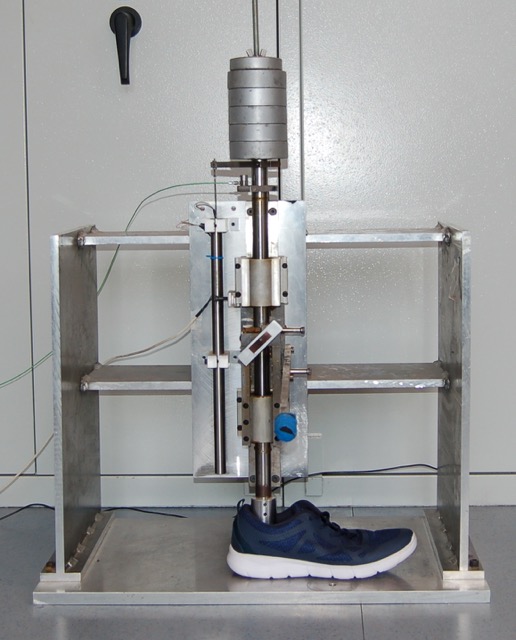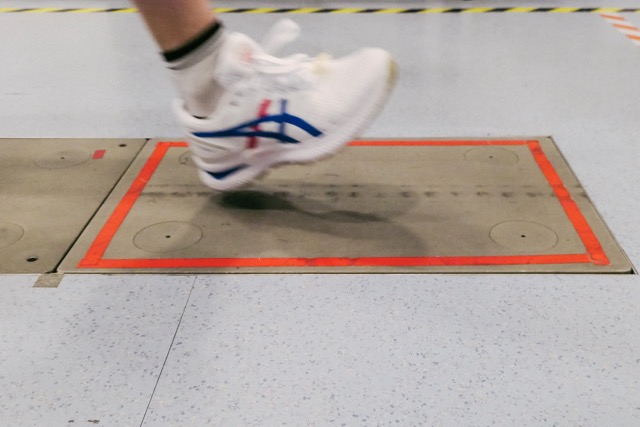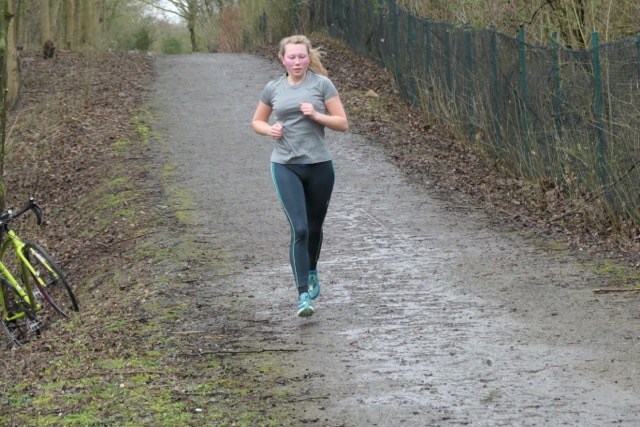The testing comprised the following parameters:
- Energy return (rebound)
- Cushioning (including compression and deformation)
- Running properties
Energy return
Energy return — that is, the capacity of a shoe to generate rebound after striking the ground — was assessed in the heel section of the shoe. The measurement was carried out by means of a special impact device that releases a weight of 8.4 kg against a small pressure plate resting on the inside of the shoe. A measuring instrument records the force or energy in the rebound, expressed as a percentage. A 50% energy return means that the shoe returns half the force it receives on hitting the ground (the ‘ground reaction force’). A total of 30 measurements were made for each shoe model: for three shoe sizes there were five measurements on each shoe, right and left.

Cushioning
This was tested in two ways:
The capacity of the shoes to cushion the impact on hitting the ground was measured using a panel of runners on a treadmill, equipped with sensors measuring the compressive force of the foot strike. Eleven runners with an average weight of 64 kg and average height of 169 cm ran five times, at a controlled speed (12 km/h), wearing each pair of shoes in the selection. Cushioning capacity, expressed as body weight per second, was calculated individually based on the runner’s weight: the lower the value, the better the cushioning capacity. Body weight per second is what the plate measures — the more the shoe cushions (absorbs) the shock, the lower the body weight per second that reaches the plate.
The cushioning material of the shoes was also tested by measuring how much of their heel section was compressed or deformed — that is, the degree of compression of the material when it hits the ground. This measurement was carried out using the same equipment that recorded the energy return of the shoes. A special impact device weighing 8.4 kg was released against a small pressure plate resting against the inside of the shoe, and a measuring instrument recorded how much (in mm) the shoe was compressed on impact. A total of 30 measurements were taken for each shoe model: five measurements on both the right and the left shoe, in three shoe sizes.
Higher compression contributes to better cushioning, since the material can absorb more of the impact than a shoe that does not compress as much.

Running qualities
Eleven experienced runners (women on average aged 23, weighing 64 kg and 169 cm tall) test-ran the various shoes on a running track and a gravel path.
All 11 runners tested all eight shoe models. After each run, they were asked to complete a questionnaire with ten questions about their perception of the general running properties, stability and cushioning of the shoes.

Interpretation and rating of results
The results of the various constituent tests were interpreted and graded in consultation with the laboratory that performed them. The various parameters tested were weighted as follows to provide an overall rating:
- Rebound: 20%
- Cushioning: 30%
- Running properties: 50%
